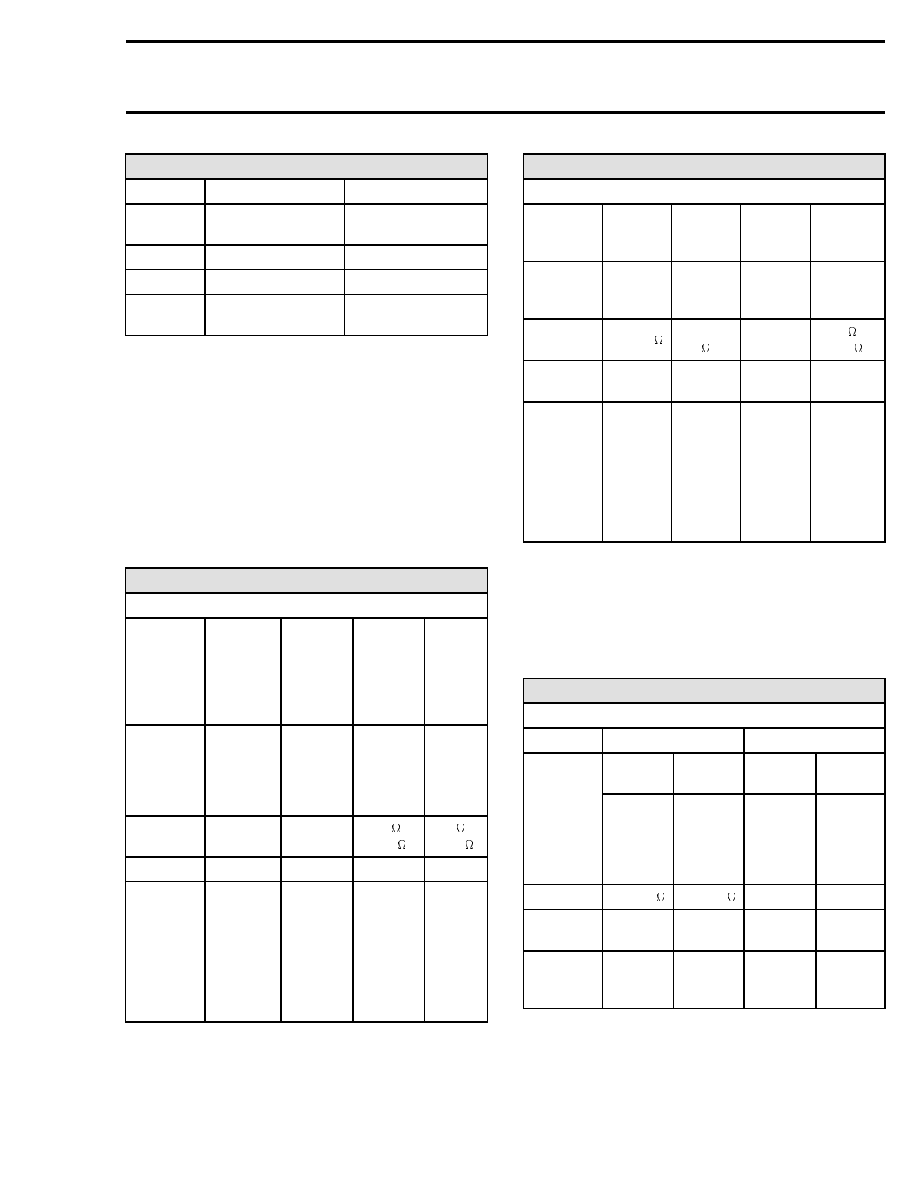Snowmobile Ski Doo REV SERIES (2006 year). Instruction - part 71

Section 07 ELECTRICAL SYSTEM
Subsection 01 (IGNITION SYSTEM)
ENGINE CUT-OUT SWITCH
TEST
Open circuit
Continuity
TEST
PROBES
BLACK/YELLOW and
BLACK wires
BLACK/YELLOW and
BLACK wires
RESISTANCE
O.L.
00.0 to 00.5
VOLTAGE
—
—
NOTE
Engine cut-out switch must
be in RUN position.
Engine cut-out switch must
be in STOP position.
Ignition Coil
Disconnect housing between the magneto and
the MPEM.
Compare readings with those appearing in the IG-
NITION COIL table.
During voltage testing, when manually starting the
engine while the spark plug is installed, the engine
will tend to accelerate beyond the compression
point. This will result in higher magneto output.
Always repeat the procedure 3 times.
IGNITION COIL
LIQUID-COOLED ENGINES
TEST
Primary
winding
resistance
Secondary
winding
voltage
Secondary
winding
resistance
spark plug
wires and
cap included
Secondary
winding
resistance
spark plug
wires
removed
TEST
PROBES
WHITE/BLUE
and BLACK
wires
On spark
plug wire
insulation
and on
engine
Between
both spark
plug caps
Male
terminals
of coil
RESISTANCE
00.2 to 0.5
—
14.5 k
to
23.5 k
9.6 k
to
14.4 k
VOLTAGE
—
1.5 to 2.5 Vdc
—
—
NOTE
Disconnect
the ignition
coil from the
MPEM
Do not probe
into spark
plug cap
with spark
plug wire
removed
from spark
plug.
Do not
attempt
to remove
spark plug
caps from
the wires.
With spark
plug wires
removed
from high
voltage
coil.
IGNITION COIL
FAN-COOLED ENGINES
TEST
Output
Ground
continuity
Secondary
winding
voltage
Cable
resistance
TEST
PROBES
RED and
BLACK
wires
BLACK wire
and engine
wires
BLACK wire
and engine
Spark plug
cable and cap
RESISTANCE
4.5 to 6.5
00.0 to 00.5
—
4.0 k
to
6.0 k
VOLTAGE
7.0 to 15.0
Vac
—
.100 to .250
Vac
—
NOTE
—
Engine
refers to
the engine
metal parts
connected
to the
magneto
housing.
The
measurement
must be
taken on
the spark
plug cable
(without the
spark plug).
—
Trigger Coil
NOTE: For SDI engine, refer to ENGINE MAN-
AGEMENT.
Check the resistance and the voltage for each trig-
ger coil.
TRIGGER COIL
LIQUID-COOLED ENGINES
TEST
Continuity
Output
Trigger coil
#1
Trigger coil
#2
Trigger coil
#1
Trigger coil
#2
TEST
PROBES
BLUE/
YELLOW
and WHITE/
YELLOW
wires
GREEN/
YELLOW
and GRAY/
YELLOW
wires
BLUE/
YELLOW
and WHITE/
YELLOW
wires
GREEN/
YELLOW
and GRAY/
YELLOW
wires
RESISTANCE
190 to 300
190 to 300
—
—
VOLTAGE
—
—
.200 to .350
Vdc
.200 to .350
Vdc
NOTE
—
—
While
cranking
engine.
While
cranking
engine.
mmr2005-082
281